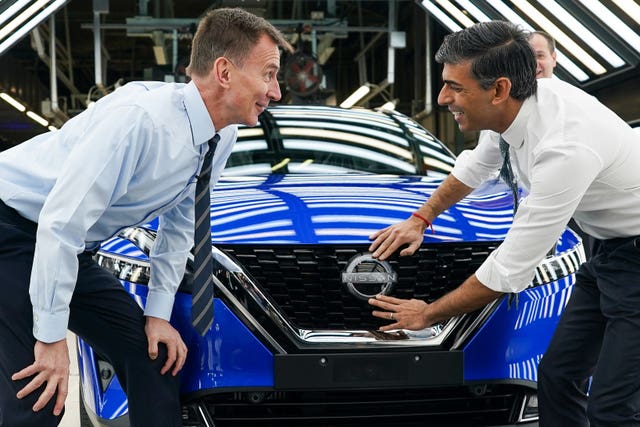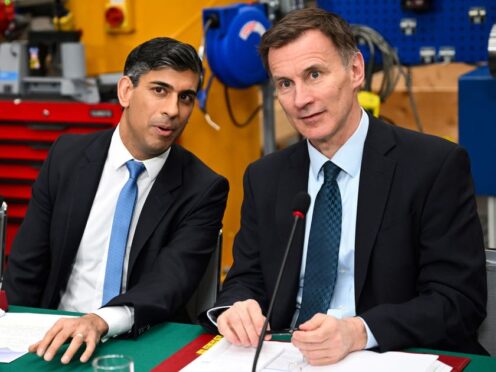Jeremy Hunt insisted he had a “plan for growth” in this week’s Budget as Downing Street denied suggestions Rishi Sunak viewed the Chancellor as timid and lacking imagination.
The Chancellor said he wanted to move towards a “lower tax economy” in a hint at a pre-election giveaway to voters in the form of a national insurance or income tax cut.
But in a sign that the measures may not be as bold as some Tories hope, he stressed the need to act in a “responsible” way.

After the Treasury released official pictures of Mr Sunak studying the Chancellor’s laptop as the pair discussed the Budget, Downing Street rejected the suggestion the Prime Minister was a “backseat driver” ahead of Wednesday’s financial statement.
Asked whether Mr Sunak viewed the Chancellor as timid, the Prime Minister’s official spokesman said: “Absolutely not. The Chancellor is working very closely with the Prime Minister to deliver our plan for the economy and obviously the Chancellor will be setting out further measures in line with that on Wednesday at the Budget.”
Mr Hunt suggested to reporters that a more efficient public sector could give him greater scope for tax cuts.
The Chancellor said: “We do want to move to a lower taxed economy, but we’re only going to do so in a way that is responsible and recognises that there are things that taxes pay for, that we couldn’t cut taxes by borrowing.
“We’ll do so in a responsible way. But if we can spend money on public services more efficiently then that will mean less pressure on taxpayers.”
REVEALED: ChatHMT on what's in the Spring Budget 2024.
Watch below to find out more 👀 pic.twitter.com/N9ZjdPIIM4
— HM Treasury (@hmtreasury) February 28, 2024
Speculation ahead of the Budget has suggested the Chancellor could seek to cut 1p or 2p off income tax or – as a cheaper alternative – national insurance, to ease the burden on working households ahead of the general election later this year.
Officials have drawn up a range of options for raising money to fund the tax cuts, potentially including reforms to the non-dom status for wealthy individuals with earnings overseas.
Scrapping non-dom status has been promised by Labour, with the money committed to measures including NHS improvements, so adopting the policy could lay a trap for Sir Keir Starmer’s party, which would have to find an alternative way to pay for its pledges.
Mr Hunt said: said: “You’ll have to see on Wednesday precisely what I’m going to announce.
“But let me be clear, there is a plan for growth compared to the Labour Party that has just had to abandon the central plan that they had for growth – this £28 billion number that one day they were supporting, the next day they weren’t.”
